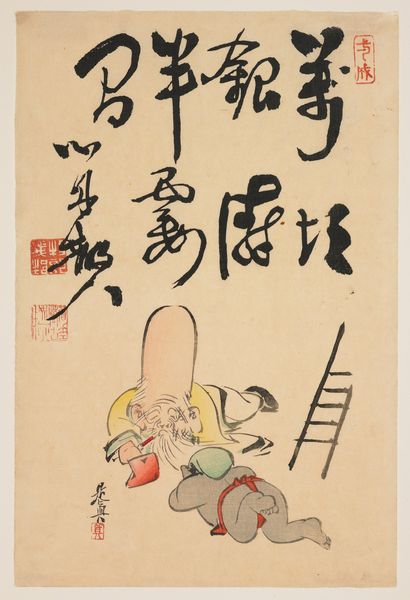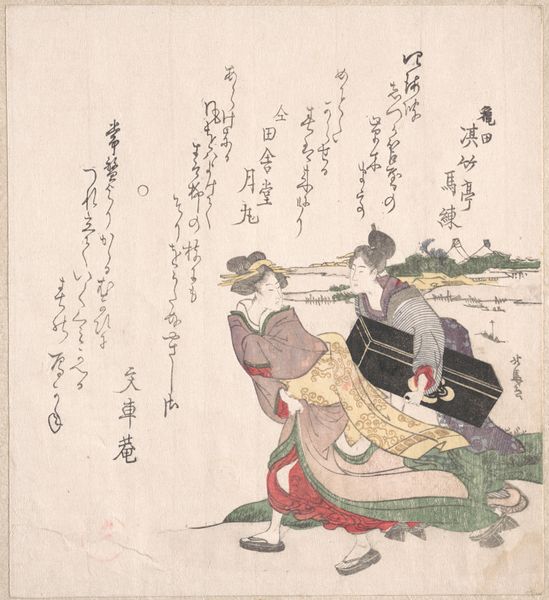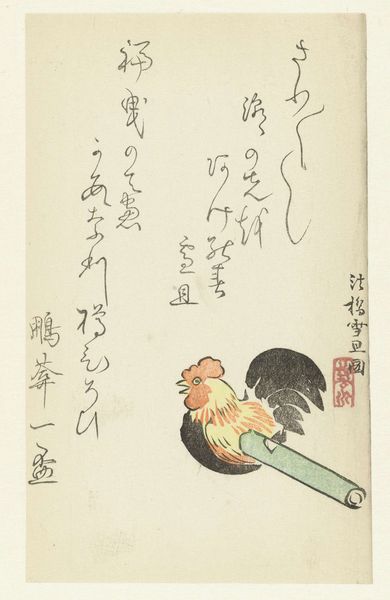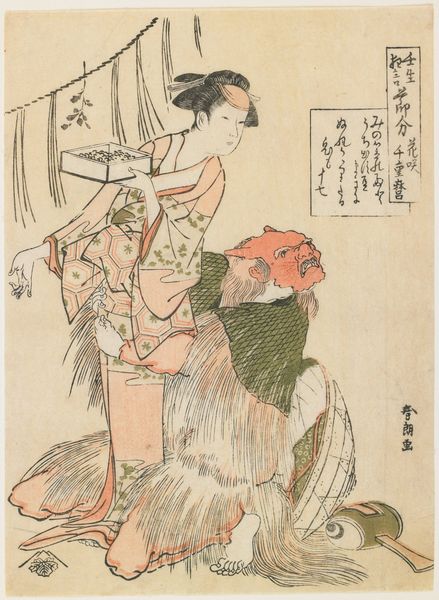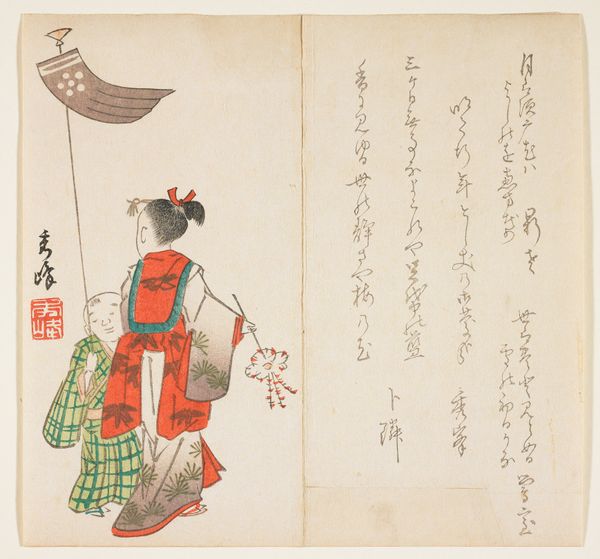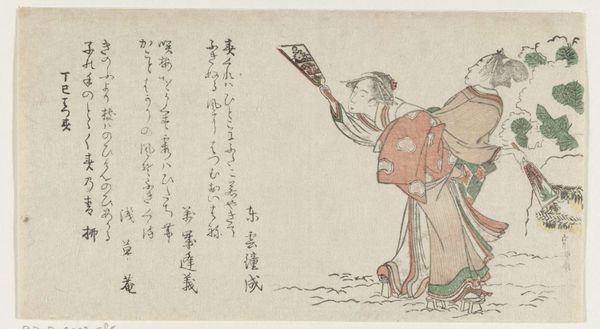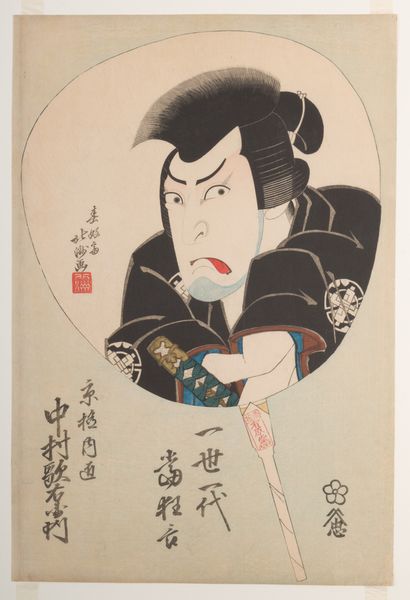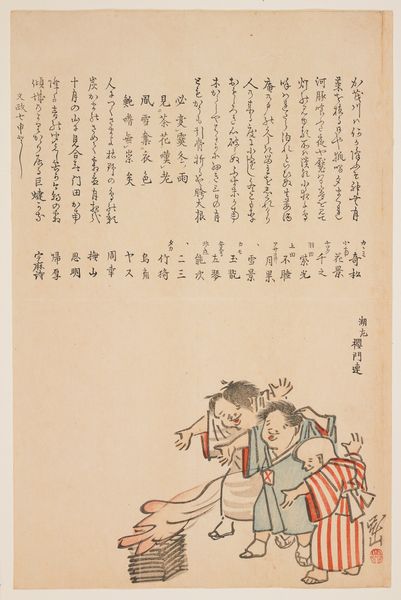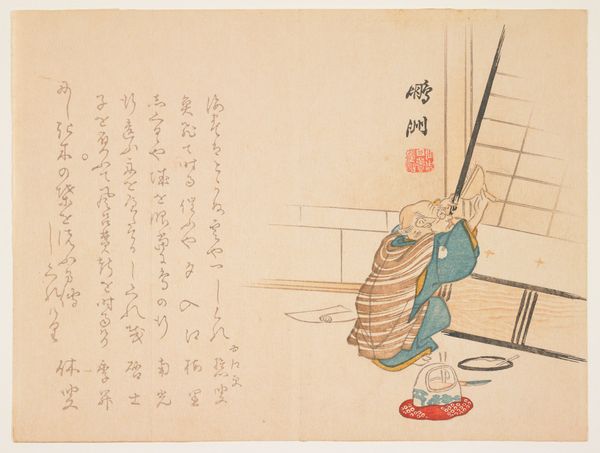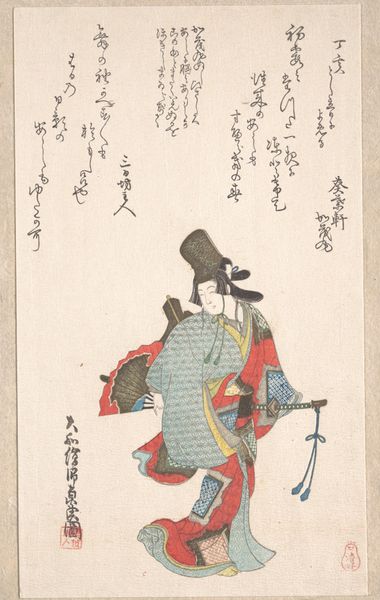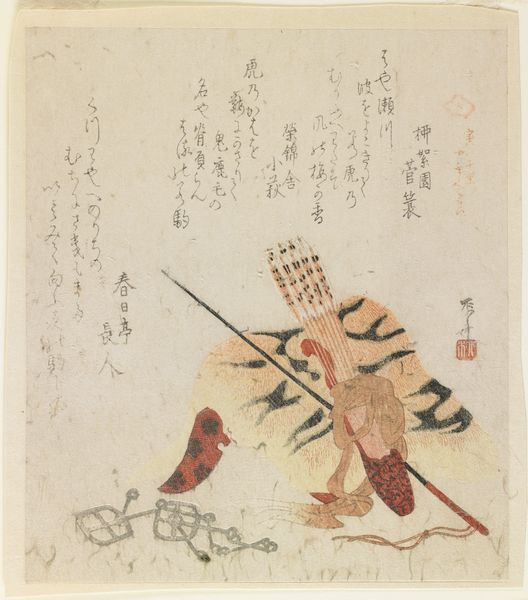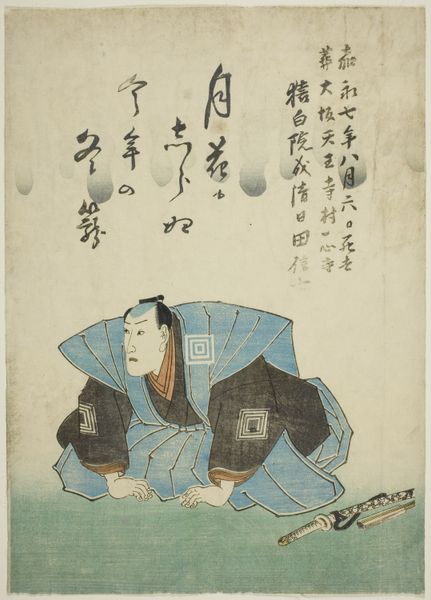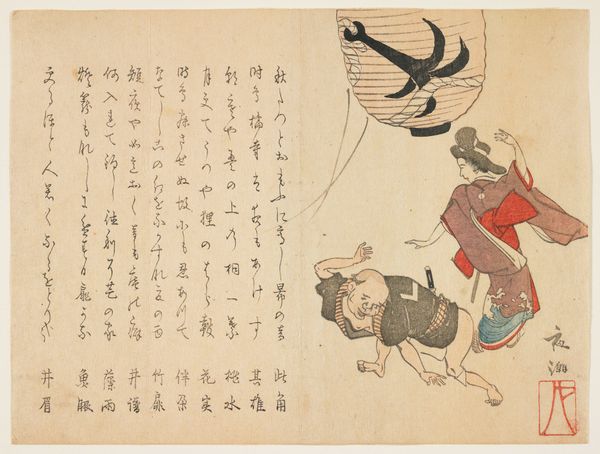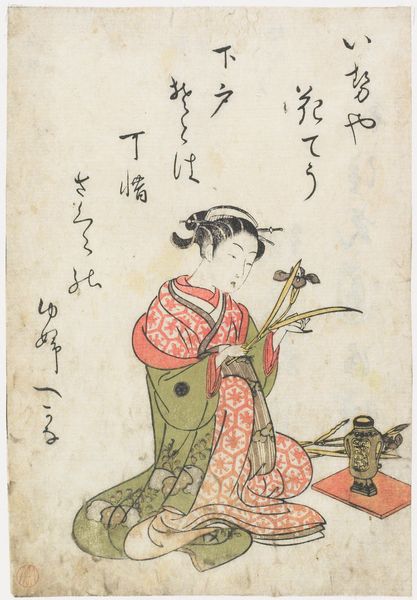
print, paper, ink
#
toned paper
# print
#
caricature
#
ukiyo-e
#
japan
#
figuration
#
paper
#
ink
#
orientalism
#
genre-painting
Dimensions: 14 1/8 x 9 1/2 in. (35.9 x 24.1 cm) (image, sheet)
Copyright: Public Domain
Curator: Take a look at "(Spear holder)", a print by Shibata Zeshin, likely crafted in the 19th century. It's a toned paper print made with ink, and currently part of the Minneapolis Institute of Art's collection. What catches your eye initially? Editor: Well, it's certainly making me chuckle! The reclining figure looks rather…unceremonious. A spear beside him, a half-empty sake cup...it's like a scene from a comedic play. There’s a relaxed, almost rebellious air to it. Curator: Indeed. Zeshin was a master of ukiyo-e and often incorporated humour into his work. The figure’s languid pose, contrasted with the spear – a symbol of military duty – presents a wonderful contradiction, wouldn't you say? It's a wry comment on social roles, perhaps. Editor: Absolutely. And think of the spear itself. A potential instrument of power, here almost an afterthought. It makes you consider the burdens of tradition and the temptation to simply…nap it off. Plus, the inclusion of a caricature style adds to its whimsical sensibility. I notice a lot of genre-painting features too. Curator: The beauty of Japanese art often lies in its subtleties. Though humorous on the surface, consider the cultural implications. The "warrior" is resting but has his sword near him, which shows some responsibility for possible combat; meanwhile, all this action is summarized through caricature! Is he a soldier on break, maybe? Or something else? I’m very fascinated by such details. Editor: It raises an interesting question about perspective. Is it glorifying leisure or critiquing it? The composition definitely has some nuance! And what do you read from the calligraphic inscription filling most of the surface? Curator: Unfortunately, I don't read Japanese... Maybe an expert on the subject could enrich our talk, to have a proper look to its orientalism symbols. Either way, Zeshin asks important questions with such pieces. Editor: This print delivers much beyond immediate amusement. It cleverly weaves satire, societal commentary, and symbolic counterpoints into an intimate moment of unexpected, carefree surrender. Curator: Exactly! The enduring power of Zeshin, really—isn’t it? He uses seeming simplicity to prompt ongoing conversations.
Comments
No comments
Be the first to comment and join the conversation on the ultimate creative platform.
